March 23, 2021
If you've been following me on Instagram lately, or if you heard Podcast Q&A episode 424, then you're probably aware of the fact that I recently crafted a keto, organic vegetable juice fast plan, which my wife Jessa and I embarked upon together over the course of five days.
In my past writings on longevity and anti-aging, and in my book Boundless, I describe why—on a quarterly basis—I do a kind-of “spring cleanup” for my body, generally via…
- Some semblance of a Fasting Mimicking Diet (also known as an FMD diet, and involving a 5-day reduction in calories at about 40% of what you normally consume)…
- A 5-day Ayurvedic cleansing protocol using kitchari stew, mung beans, ghee, olive oil, grapefruit, choice herbs and spices, and a few strategically timed organic coffee enemas (one of my favorite ways to get a done-for-you option for this is to use Dr. John Doullaird's “Short Cleanse” protocol)…
- A full-on Pancha Karma detoxification protocol I learned about when I interviewed Dr. Stephen Cabral (you gotta hear the podcast or read his book, The Rain Barrel Effect, to get the nitty-gritty on this funky cleanse)…
- Or even a trip to an exotic locale like the Swiss Mountain Clinic for a bunch of medical treatments combined with a specially selected medically supervised diet…
…but I've never done a juice cleanse.
However, as you may have recently heard on my podcast Is Juicing Healthy, The World’s First Keto-Friendly Juice, Everything You Need To Know About Cold Pressed Juices, Juice Fasts & More With Farmers Juice Founder Junaid Kalmadi, or read in my article Why Most Juices Are Sugar-Bombs Loaded With Toxins That Spoil Faster Than You Can Drink Them (& What You Can Do About It), there are a variety of benefits derived from taking a break from ample calories, solid foods, oils, fats, and higher amounts of protein—and instead drinking organic, low-carbohydrate, nutrient-dense vegetable juices.
When used specifically for the purposes of fasting, these juices can allow for very similar metabolic responses to other fasting protocols, including:
- Sparking of autophagy (cellular cleanup)…
- Enhanced detoxification pathways (particularly for the liver and gallbladder), a longevity-enhancing decrease in mTOR activity…
- A much-needed “break” for the gut and for cells of the gut lining to heal (especially if you've been consistently eating solid hard foods like seeds, nuts, raw vegetables, skins of fruits, etc.)… Additionally, gut irritants such as lectins, phytates, and high-fat foods can contribute to some degree of intestinal permeability.
- Perhaps most importantly, a chance to benefit from the spiritually enhancing aspects of a fast, particularly because it allows more time, energy, and focus for breathwork, prayer, meditation, journaling, service, and self-examination—which are all spiritual disciplines that can be impeded by the constant presence or temptation of food and also a belly full of food…
Anti-aging, detoxification, gut healing, organ cleanup, spiritual enhancement… What's not to lose, right?
So, after recording the podcast with Junaid from Farmers Juice, he and I got down to talking and decided to mastermind on what the ideal juice fast plan would look like for a wide variety of activity levels and body weights and which “types” of juices should be included in the morning, midday, evening, and even for workout support for a top-notch juice fast plan.
In this article, you'll discover exactly what we mapped out, and if you want to try the same routine for yourself—which Farmers Juice and I teamed up to offer as a 1-day, 3-day, or 5-day fast—you can do so by clicking here and using code BEN at checkout to save $5 on any order.
Ben & Jessa Greenfield's Juice Fast Plan
Let's begin with the basics. Blessed with the opportunity for good “husband-and-wife-accountability” (AKA, despite my carnivorous cravings, I knew I'd get read the riot act if my wife ever found me, say, sneaking a can of sardines in at midnight), my wife Jessa and I dove into our 5-day juice fast plan on Saturday, February 6, finishing on the morning of Thursday, February 12.
Based on the “algorithm” I developed with the team at Farmers Juice, our protocol—which averaged about 600 kcal/day for me and 400 kcal/day for Jessa—was as follows:
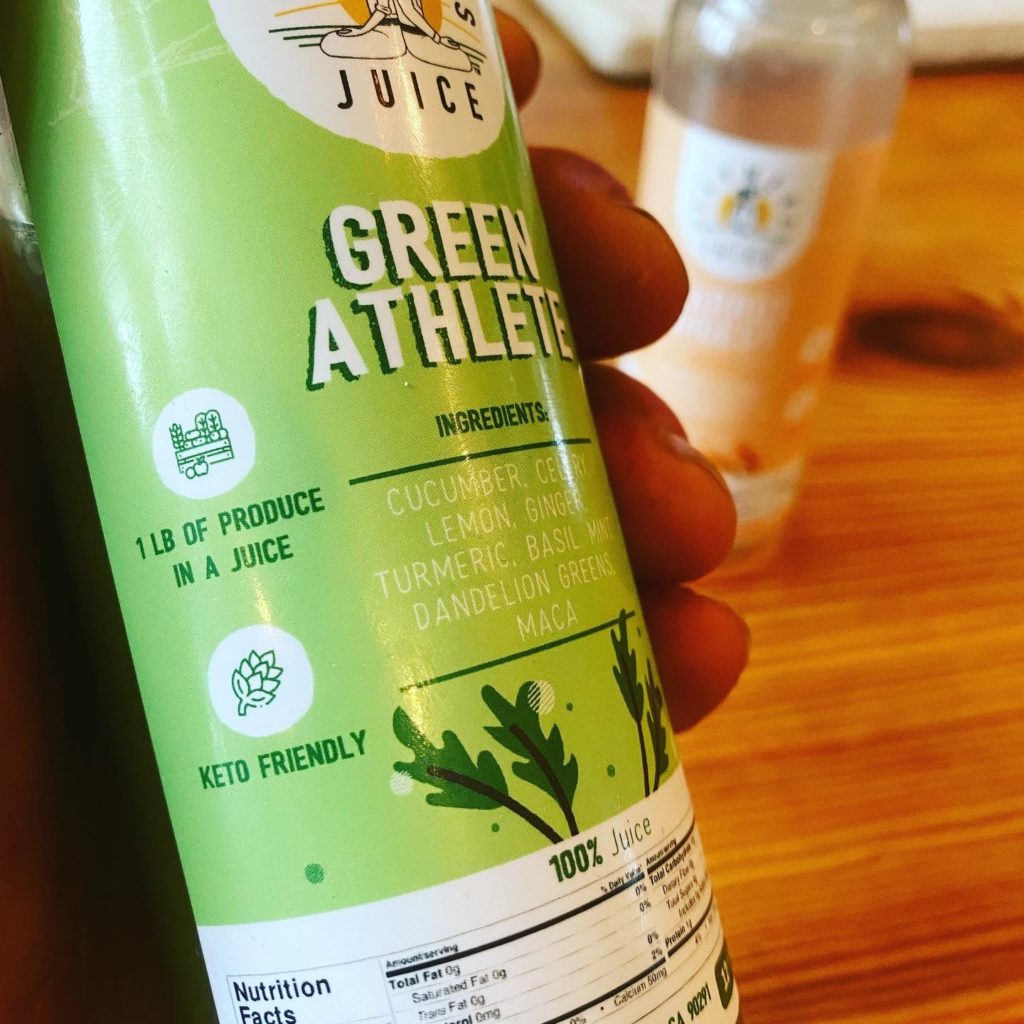 Ben's Juices
Ben's Juices
- Waking: Charcoal (Farmers Juice developed an incredibly tasty, low-calorie version of a charcoal drink with a nice, sweet lime flavor—perfect for beginning and ending the day with toxin-binding.)
- Morning (First meal of the day, typically after a 12-16 hour overnight intermittent fast.): 1 Juice (Category 1a) + 1 Juice (Category 1b)
- Midday: 1 Juice (Category 2) + 1 Juice (Category 1b)
- Afternoon (For me, usually pre-workout): 1 Juice (Category 3)
- Evening: 1 Juice (Category 2) + 1 (Juice Category 1b)
- Before Bed: Charcoal
Total Juices Per Day: 7 Juices + 2 Charcoal
Ben's Shots
(Small 2-ounce shots of nutrient-dense herbs and spices like turmeric, ginger, lemon, black pepper, etc.)
- Morning: 1 Shot (Category 1)
- Midday: 1 Shot (Category 2)
- Afternoon: 1 Shot (Category 1)
- Evening: 1 Shot (Category 3)
Total Shots Per Day: 4 Shots
Extras I Threw In
- 1-2 shots of liquid ketone esters per day. (In this case, I was using the KetoneAid brand, though HVMN is also a good option and 1-2 servings of 10g Kion Aminos powder per day.
- Continued use of my entire Kion supplements protocol (detailed in this recent supplementation principles article), along with hefty use of Quinton mineral packets, since increased electrolyte intake is highly recommended during any type of low-calorie or ketogenic protocol to avoid cramping, light-headedness, or sleep disturbances. Because I cut out any and all animal products, the only supplement I did not continue to take was fish oil.
These extras are not 100% necessary, but I included them to support the fact that I was still swinging heavy kettlebells in the garage, walking 5-7 miles per day, hitting the sauna every morning, and generally staying my usual very physically active self. My reason for continuing heavy weight lifting is that there's plenty of evidence that subjecting the muscles to a heavy load even while eating a very low-calorie diet allows for far less loss of muscle mass during a fast.
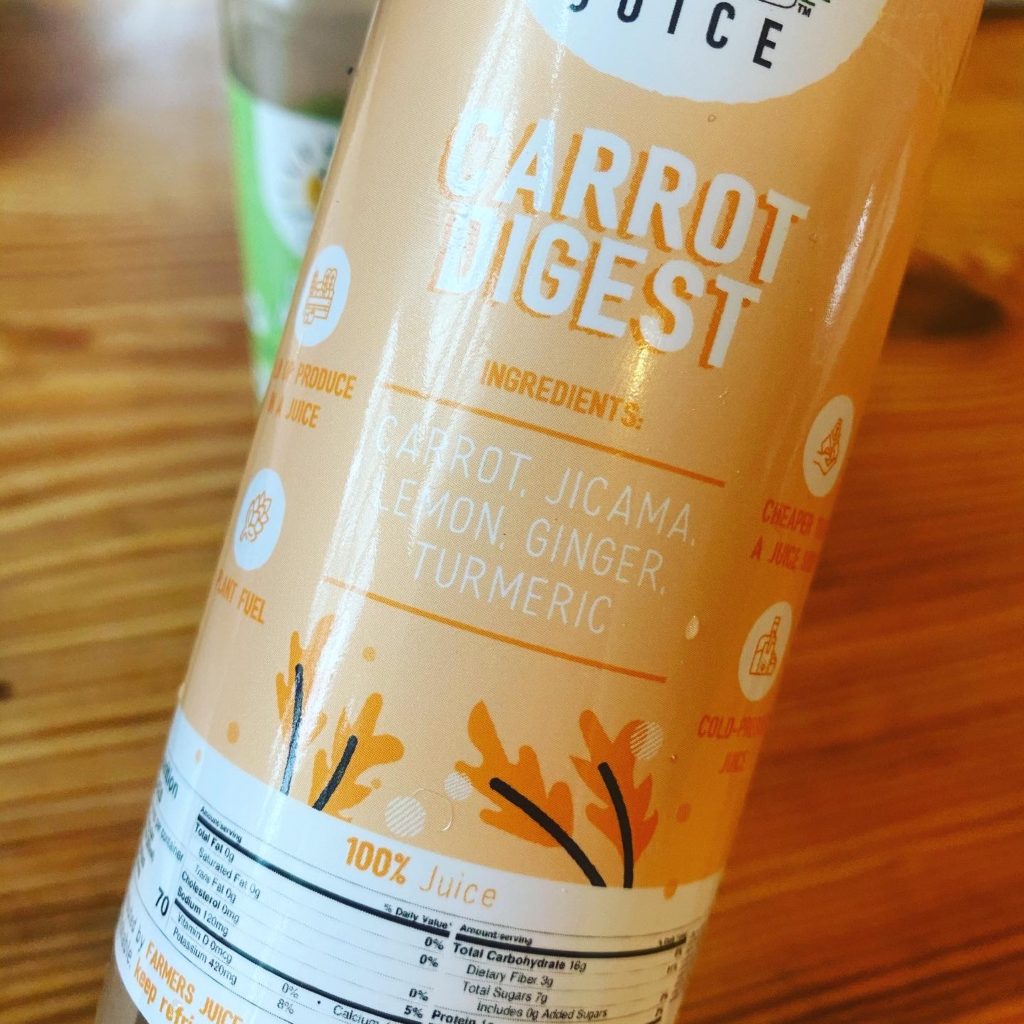 Jessa's Juices
Jessa's Juices
- Waking: Charcoal
- Morning: 1 Juice (Category 1a) + 1 Juice (Category 1b)
- Midday: 1 Juice (Category 2)
- Afternoon: 1 Juice (Category 3)
- Evening: 1 Juice (Category 2)
- Before Bed: Charcoal
Total Juices Per Day: 5 Juices + 2 Charcoal
Jessa's Shots
- Morning: 1 Shot (Category 1)
- Midday: 1 Shot (Category 2)
- Afternoon: n/a
- Evening: n/a
Total Shots Per Day: 2 Shots
Juice Details
- Category 1a: Focus Greens, Green Athlete, Performance Greens
- Category 1b: Carrot Digest, Earthy Roots, Turmeric Energy
- Category 2: Peaceful Greens, Digestive Greens
- Category 3: Watermelon Vitality, Strawberry Kick, Focus Greens, Green Athlete, Performance Greens
Shot Details
- Category 1: Athletic Aid, Focus Fuel
- Category 2: Ginger Immunity, Upbeat Immunity, Gut Feeling Good
- Category 3: “Peaceful Mind”
Below are the ingredients, should you want to get a closer glance at the profile of each of the juices:
- Athletic Greens: cucumber, celery, lemon, ginger, turmeric, basil, mint, dandelion greens, maca
- Digestive Greens: cucumber, dino kale, ginger, lemon, turmeric, basil, mint, apple cider vinegar
- Focus Greens: cucumber, basil, mint, ginger, lemon, turmeric, lime, matcha
- Peaceful Greens: cucumber, basil, mint, ginger, turmeric, lemon, ashwagandha
- Performance Greens: cucumber, celery, lemon, ginger, turmeric, basil, mint, lion's mane
- Ginger Immunity: apple, lemon, ginger, turmeric, cayenne pepper, black peppercorn
- Up-Beet Immunity: lemon, apple, pineapple, ginger, turmeric, cayenne pepper, black peppercorn, beet
- Gut Feeling Good: apple, coconut water, jicama, apple cider vinegar, ginger, lemon
- Green Fuel: cucumber, kale, celery, spinach, lime, ginger, apple, lemon
- Focus Fuel: apple, fennel, lemon, lemongrass, jalapeno, matcha
- Athletic Aid: coconut water, orange, turmeric, lemon, ginger, black pepper
- Carrot Digest: carrot, jicama, lemon, ginger, turmeric
- Earthy Roots: carrot, orange, apple, pineapple, beet
- Turmeric Energy: apple, lemon, ginger, turmeric, cayenne
- Orange Immunity: oranges, ginger
- Immunity Strength: pineapple, ginger, lemon, cayenne pepper
- Ginger Renewal: extra ginger, apple, lemon turmeric, cayenne pepper, black peppercorn
You can also see all ingredients/details for every juice and shot, including those that weren't a part of this fast, on the Farmers Juice website.
Quantification
On the day prior to beginning the fast, I began testing the following:
- Continuous Blood Glucose, using a Freestyle Libre paired to the Levels Health app, a strategy I discuss in this podcast.
- Breath Ketones, using a Biosense breath ketone monitor.
- Biomarkers, using the Thorne at-home bloodspot, saliva, and urine tests:
- Estradiol
- Progesterone
- Testosterone
- DHEA
- Cortisol
- TSH
- Insulin
- HbA1c
- Vitamin D
- Melatonin
- Cortisol
- Weight and Body Fat %, using a Withings Body Analyzer scale.
- Sleep, Body Temperature, Heart Rate Variability (HRV), and Readiness scores, using an Oura ring. (You can also use a heart rate strap (such as the Viiiva, Polar H7, or any others on this list) along with my NatureBeat app, which will show you low-frequency (LF) and high-frequency (HF) signals. These LF/HF signals tell you a lot more about the state of your parasympathetic and sympathetic nervous system.)
I continued to test these parameters for several days after the fast, while also of course paying attention to qualitative variables such as mood, energy (especially during workouts), quality of meditation/breathwork/spiritual practices, and overall levels of productivity and creativity.
Ben & Jessa Greenfield's Juice Fast Plan Results
The qualitative differences were profound between my own fasting experience and that of my wife's. After a slight energy slump the first day, my wife felt clean, amazing, positive, and full of energy—continuing to walk, hike, play tennis, garden, paint, and engage in all her normal daily activities. What can I say? She's either a real trooper, is making the best use of her hard, gritty, Montana rancher genes, or both.
I was the complete opposite.
For example, likely due to a rapid shift in my microbiome and the absence of solid food, by the end of Day 1, I couldn't stay off the toilet. I was literally spraying green liquid-goo all over the back of the toilet seat. Furthermore, both my energy levels and libido were tanked. My usual 24 kg kettlebell felt like a 200 lb monster. I couldn't focus. All I could dream about was bacon, which was not helped by the fact that my twin chef boys decided to cook up copious amounts of bacon, ham, eggs, and fish during our entire juice fast. Those little bastards.
I powered through all these gut issues until the morning of Day 3, at which point the amount of time I was spending on the toilet was beginning to impede work, namely my ability to be able to engage in phone calls with clients and team members and to work on articles, podcast shownotes, etc., all of which I wasn't about to do while squatting over a toilet bowl. So, in an attempt to “dam the floodgates,” so to speak, two-and-a-half days into the fast, I began to replace a couple of the juice options each day with a low-calorie, plant-based solid food, particularly Miracle Noodles zero-calorie, zero-carbohydrate Japanese yam noodles, Akasha sea moss gel (use code BEN10 to save 10%), and organic pumpkin puree. I also began to blend the juices with ice and eat them with a spoon or spatula to slow my consumption rate and allow for the “feel” of eating solid food. (I must say that the Carrot Digest blended with ice actually produced a somewhat creamy, milkshake-esque texture, especially when combined with a touch of stevia and sea salt.) This allowed me to still adhere to the “spirit of the fast,” while simultaneously successfully restoring normal bowel function, probably because the addition of bulk insoluble fiber slowed my rate of gastric emptying and slowed gastric motility considerably.
On the flip side, there were also, from a qualitative standpoint, several notable benefits that went beyond developing an intimate relationship with the feng shui of my bathroom. For example, my prayer time, devotional reading, meditation, and breathwork/breath-hold time seemed hyper-focused, extremely high quality, and deeply spiritual—the reasons for which are detailed in books like Atomic Power With God Through Fasting and Prayer and a Hunger For God. As I've noted in other articles, fasting paired with breathwork, meditation, and prayer are the turkey and cranberry (pardon the pun) of the spiritual disciplines kingdom.
In addition, while I'm typically quite sleepy a couple of hours after dinner, I instead found myself with more energy than usual in the evening, despite being a bit sluggish the rest of the day. In fact, my energy levels were so high late into the night that I wound up needing to use high-dose melatonin (in this case, two nightly 200 mg Sandman melatonin suppositories from Dr. John Lieurance) to get quality deep sleep. My wife (you guessed it), on the other hand, felt fine and slept like a baby. Interestingly, while energy was high, libido was low. Neither my wife nor I craved or desired sex at all during any of the five days.
Now, let's dive into some of the quantitative variables I measured.
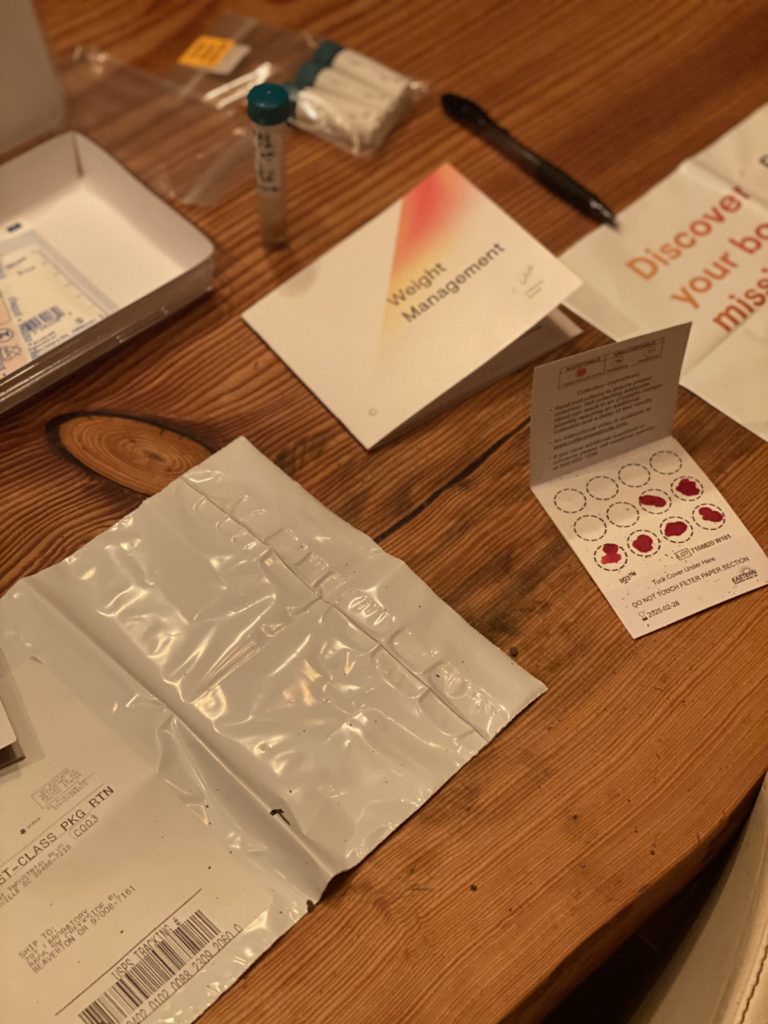 Pre- & Post-Fast Weight
Pre- & Post-Fast Weight
Let's begin with weight. No surprises here. My weight dropped considerably over the 5-day protocol, going from 185.5 lb at 4% body fat to 178.8 lb at 4% body fat, indicating a 7 lb weight loss, primarily from carbohydrates, water, and small amounts of muscle. However, within two days, my weight was already back at 180 lb and climbing, indicating my body was quick to begin re-assimilating appreciable amounts of glycogen, water, and electrolytes.
Thorne Blood & Biomarker Tests
For simplicity's sake, I only focused on two specific at-home test kits from Thorne: the Sleep Test and the Weight Management Test.
The Sleep Test, via urine testing, measures:
- Melatonin
- Cortisol
While the Weight Management Test, via blood spot and saliva samples, analyzes:
- Estradiol
- Progesterone
- Testosterone
- DHEA
- Cortisol
- TSH
- Insulin
- HbA1c
- Vitamin D
Pre- & Post-Fast Melatonin & Cortisol via Sleep Test (Urine)
Pre-fast sleep test results show higher-than-normal melatonin, particularly morning melatonin, and also slightly high cortisol throughout the day.
Pre-Fast Melatonin & Cortisol

Neither of these came as much of a surprise to me since I supplement with melatonin at night to sleep (particularly using the high-dose suppository or liposomal approach of my friend Dr. John Lieurance that we discuss here), and I have done other more advanced cortisol testing through DUTCH Labs showing that I have a “sluggish” level of cortisol clearance and so tend to have naturally higher-than-normal cortisol during the day.
Post-Fast Melatonin

Post-fast, there really wasn't much of a change in melatonin as you can see, but again, I was supplementing with Dr. Lieurance's melatonin.
Post-Fast Cortisol
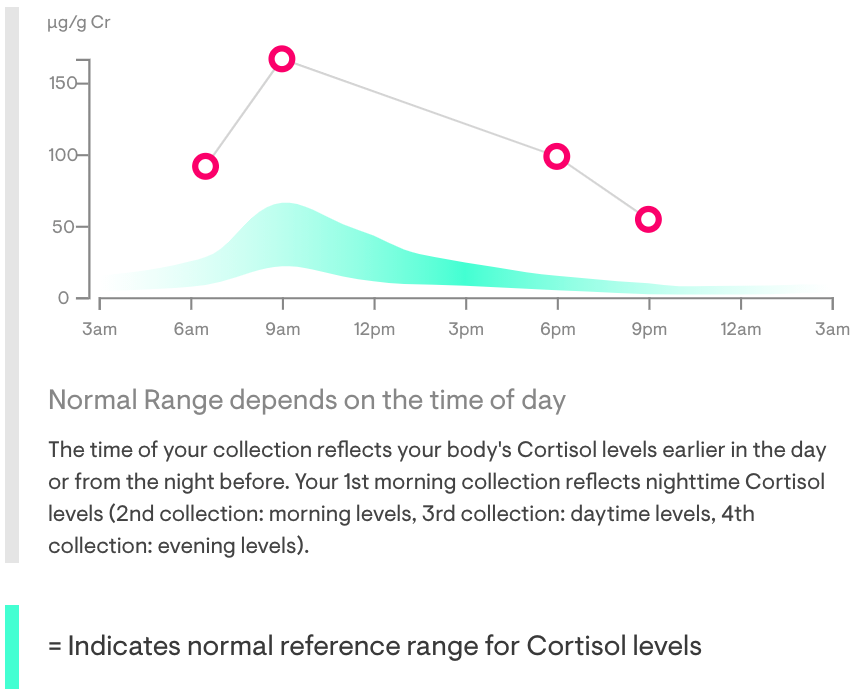
As you can see, my post-fast cortisol patterns continued as usual, but these were actually *higher* after the fast.
Perhaps not eating my usual tasty meat dishes was really stressing me out. Or hunger and the stress from that feeling could also have elevated cortisol. Possibly a downregulation of thyroid function due to low calorie intake slowed cortisol metabolite clearance, which is also a common phenomenon.
Meanwhile, pre- and post-fast weight management results were as follows.
Pre- & Post-Fast Estradiol
Estradiol is the most powerful and active form of the three forms of estrogen in your body. In addition to being important for bone health, fertility, and cardiovascular health, estradiol plays a role in how your body regulates weight and metabolism.
In women, an elevated estrogen level can indicate growth in the ovaries. This can also be a result of taking estrogen supplementation or from using supplements such as DHEA that the body can convert into estrogen.
Elevated estrogen levels in men become more common with age because of a decline in testosterone levels and increased activity of the enzyme aromatase, which converts testosterone to estrogen. Aromatase is also more active with higher levels of body fat, high intake of alcohol, insulin resistance, stress, and some prescription medications. Use of hormones and exposure to estrogen-like chemicals in the environment can also be underlying causes of elevated estrogen in men.
Pre-Fast Estradiol
 My estradiol level was above the optimal range, which can be caused by overproduction (especially in fat tissue), poor ability to eliminate/detoxify estrogen, or possibly exposure to estrogen-like chemicals in my environment.
My estradiol level was above the optimal range, which can be caused by overproduction (especially in fat tissue), poor ability to eliminate/detoxify estrogen, or possibly exposure to estrogen-like chemicals in my environment.
These results may impact my decision to continue a “microdose” of testosterone in the morning and evening via a gonadal cream I've been using, but let's see what the post-fast results look like, shall we? Maybe all the juice wiped it out.
Post-Fast Estradiol
 As you can see, post-fast results were actually slightly higher for estradiol values.
As you can see, post-fast results were actually slightly higher for estradiol values.
Pre- & Post-Fast Progesterone
Although progesterone is primarily known as an ovarian hormone in women that is important for ovulation and pregnancy, progesterone plays other roles in health in both men and women.
In women, an elevated progesterone level in the absence of pregnancy is uncommon. There can be spikes in progesterone during the second half of the menstrual cycle that can cause changes in appetite and body weight.
Progesterone is also produced to a lesser extent in the adrenal glands. In men, progesterone is produced in the testes and the adrenal glands. A progesterone level that is not in the normal range can result in bloating and food cravings. In men and postmenopausal women, supplemental progesterone would be the most common cause of elevation. Your progesterone levels are also connected to thyroid function and conversion of fat into energy.
An elevated progesterone level is a rare occurrence in men, and in some cases, it has been associated with Graves' Disease—an autoimmune form of hyperthyroidism. If you have a high level of progesterone and are not using progesterone therapy, then an evaluation of thyroid function is warranted. Symptoms of Graves' disease include sweating, rapid heart rate, anxious mood, irritability, tremor, and erectile dysfunction.
Pre-Fast Progesterone
 The results on this one are interesting because I've actually been experimenting with naval DHEA and progesterone administration before bed at night as a sleep “hack” (a product called Cortinon from idealabsdc.com). Obviously, it has elevated my levels significantly! So I guess this means transdermal administration of progesterone is pretty darn effective! I also plan to back off the dosage after seeing these numbers.
The results on this one are interesting because I've actually been experimenting with naval DHEA and progesterone administration before bed at night as a sleep “hack” (a product called Cortinon from idealabsdc.com). Obviously, it has elevated my levels significantly! So I guess this means transdermal administration of progesterone is pretty darn effective! I also plan to back off the dosage after seeing these numbers.
Post-Fast Progesterone
As you can see, my progesterone values actually decreased post-fast. They were still high, as to be expected due to my supplementation with the Cortinon, but considering the values lowered considerably while estrogen actually increased significantly makes me suspect that based on a much lower progesterone:estrogen ratio, the juice fast kind of…well…softened me up a bit, hormone-wise. I should have watched a chick flick to see if I got a little more weepy, I suppose.
Pre- & Post-Fast Testosterone
A high testosterone level has a very different association with body weight in men and women. With regard to body weight, testosterone plays a role in both men and women, and it does so in several unique ways that sometimes appear to be opposite to one another. In men, higher testosterone levels are associated with more muscle, less body fat, and better insulin sensitivity (better metabolic health). In women, however, higher levels of testosterone are associated with worse insulin sensitivity and increased body weight. Despite these nearly opposite roles, testosterone is an important biomarker for both body weight/composition and metabolism, and optimal levels are supportive in women and men.
Testosterone is the predominant “male” hormone made in the human body. In men, testosterone is made in the testes. Although its major function is to regulate sperm production, testosterone is active throughout the body and has an impact on many areas of health, including bone and muscle health/mass, libido, fat distribution, heart health, blood cell production, and hair growth/distribution.
Although high levels of testosterone in men are normally associated with better body composition than lower levels—greater muscle mass and less body fat—high levels can be associated with heart disease and high blood pressure, which can both also be associated with being overweight.
A testosterone level can be elevated for several reasons. The most common reason is taking supplemental testosterone. If you are using testosterone to boost a low level or to augment your normal level, then you might be using more than you need. It is best to consult with your prescribing health-care practitioner to determine if your current dose needs to be adjusted.
Pre-Fast Testosterone
 In my case, as you can see, my testosterone is really quite unbelievably high, and I suspect that the reason for this is that when I applied my morning transdermal cream to my scrotum, I probably still had some cream on my fingertip when I gave the blood sample. That's about all I can imagine would have made the values read this high, as that's not a physiologically possible value of testosterone for a human male.
In my case, as you can see, my testosterone is really quite unbelievably high, and I suspect that the reason for this is that when I applied my morning transdermal cream to my scrotum, I probably still had some cream on my fingertip when I gave the blood sample. That's about all I can imagine would have made the values read this high, as that's not a physiologically possible value of testosterone for a human male.
Post-Fast Testosterone
 Unfortunately, as you can see, post-fast testosterone values seem to have had the same “issue”… although this time testosterone was even higher. I'm going to have to “throw out” this value as meaningless at this point.
Unfortunately, as you can see, post-fast testosterone values seem to have had the same “issue”… although this time testosterone was even higher. I'm going to have to “throw out” this value as meaningless at this point.
Pre- & Post-Fast DHEA
An abnormally high DHEA level in men is not common. However, it is occasionally seen in athletes. DHEA has many positive effects, including promoting a healthy ability to build muscle and maintain desirable body composition.
Dehydroepiandrosterone (DHEA) is produced in the adrenal glands and can be converted to testosterone and estrogen in other tissues. DHEA balances the effect of cortisol on metabolism and can be especially important for age-related weight maintenance.
DHEA is an age-dependent hormone. Because the body turns DHEA into testosterone, testosterone is also age-dependent. Prior to puberty, the body produces very little DHEA. But during puberty, DHEA production and the resulting increase in testosterone bring about reproductive development, deepen the voice, and build muscles. DHEA production peaks in a man's mid-20s; then, after age 30, most men begin to experience a gradual decline in DHEA and testosterone levels.
The body's production of DHEA is in direct competition with the body's production of cortisol in the adrenal glands because both DHEA and cortisol use the same hormone precursor known as pregnenolone. A high level of DHEA can inhibit the production of cortisol.
Pre-Fast DHEA
 My results indicate that I have a high level of DHEA. For the same reason my progesterone was high, I suspect my elevated DHEA was also due to the naval DHEA pregnenolone I've been experimenting with.
My results indicate that I have a high level of DHEA. For the same reason my progesterone was high, I suspect my elevated DHEA was also due to the naval DHEA pregnenolone I've been experimenting with.
Post-Fast DHEA

As you can see, DHEA dropped slightly post-fast, which—combined with the progesterone:estrogen ratio drop and insulin drop (see below later)—just continues to make me suspect a long-term juice fast or fully plant-based diet may make a dent in one's overall libido/anabolic hormone status.
Pre- & Post-Fast Thyroid
Thyroid-stimulating hormone (TSH) is a hormone secreted by the pituitary gland that stimulates the production of T4 and T3— hormones in the thyroid gland. An abnormal level of TSH is often the first sign of thyroid dysfunction and can contribute to problems with body weight and metabolism.
Although it might be counterintuitive, a high level of TSH indicates low thyroid function, while a low level of TSH can be indicative of an overactive thyroid. This is because of what is called a negative feedback loop. When your thyroid secretes hormones (T3 and T4) into your bloodstream, it signals your pituitary gland to slow the secretion of TSH. On the other hand, if your thyroid is not secreting enough thyroid hormone, then your pituitary gland is not signaled to stop secreting TSH. Although it keeps trying and trying, you will see an elevated TSH but a low level of thyroid hormones.
Pre-Fast Thyroid
 My results indicate that I have a normal TSH level, which most likely means my thyroid gland is functioning normally. This is great news because healthy thyroid function has a positive influence on many systems in the body. Thyroid issues are very common, especially as people get older. Although my thyroid function is healthy today, it is something to consider checking again in the future.
My results indicate that I have a normal TSH level, which most likely means my thyroid gland is functioning normally. This is great news because healthy thyroid function has a positive influence on many systems in the body. Thyroid issues are very common, especially as people get older. Although my thyroid function is healthy today, it is something to consider checking again in the future.
Post-Fast Thyroid
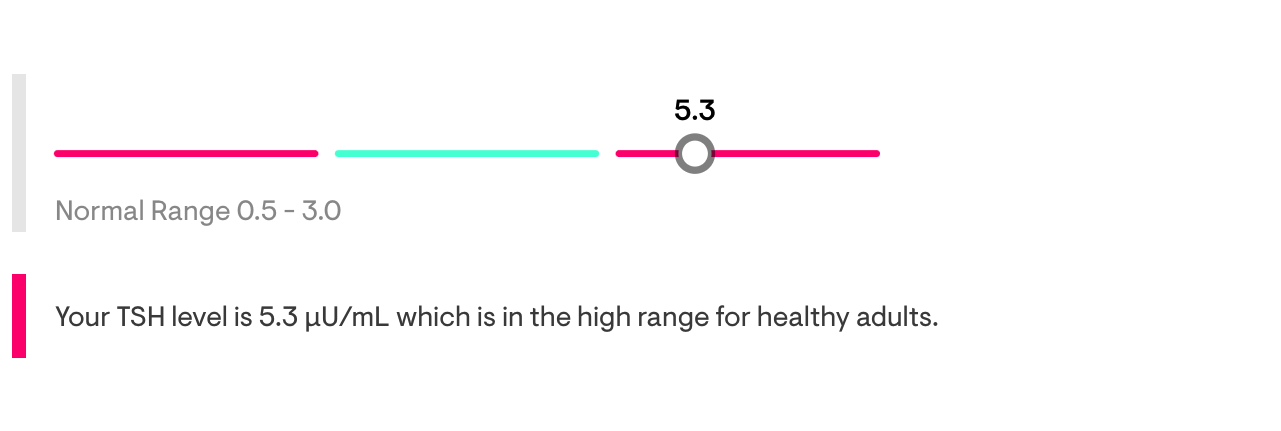
No surprises here: Post-fast TSH indicated a significant downregulation of thyroid, which is to be expected for any type of multi-day significant calorie cut like the one I did for this fast. Although I wasn't personally sleep-deprived, sleep deprivation can also increase TSH, even though thyroid function (T4/3 levels) could be normal.
Just a glimpse of what happens to your thyroid function if you limit calories for weeks on end without any “re-feeds,” as many dieters do!
Pre- & Post-Fast Insulin
Insulin is a hormone made and stored in beta cells and secreted by the pancreas in response to glucose entering the bloodstream. Insulin's role is to regulate blood glucose levels by moving glucose into the cells to either use for immediate energy or to store for later use (most commonly as fat). Because the release of insulin is triggered by the presence of glucose in the bloodstream, which most often occurs following a meal, insulin levels are most accurate when measured after an 8-12 hour fast from foods and drinks (other than water).
Pre-Fast Insulin

My results indicate that I have a normal level of insulin, which means my pancreas is producing sufficient amounts of insulin and I am at lower risk for pre-diabetes, cardiovascular disease, and unhealthy body weight. My normal insulin levels also indicate my pancreas and beta cells are functioning well, and my body is producing enough insulin to support the number of carbohydrates or sugar I am consuming in my diet.
Post-Fast Insulin
My insulin levels dropped significantly post-fast, as should be expected when calories are significantly restricted.
Pre- & Post-Fast HbA1c
Hemoglobin A1c (HbA1c or glycated hemoglobin) is a test of average blood sugar level over the previous 90 days. It measures the percentage of hemoglobin in red blood cells that is coated with sugar. Although this test does not tell you how high your blood sugar level is, or how much time your blood sugar spends at different levels, it is a good measure of average blood sugar control and can be used to diagnose diabetes or pre-diabetes. A normal HbA1c level is associated with normal body weight, and in individuals who have a high HbA1c level and excess body weight, lowering HbA1c is sometimes used as part of a strategy to support weight loss. HbA1c percentages correspond to average blood sugar levels.
Pre-Fast HbA1c

My results indicate a normal HbA1c level, meaning my body is tolerating the number of carbohydrates I'm consuming. A normal HbA1c level is associated with healthy blood sugar levels, normal body weight, and a lower risk for metabolic syndrome and diabetes.
Post-Fast HbA1c
While my HbA1c exhibited no significant change—aside from a slight rise, likely due to the glycemic variability I experienced during the fast (see blood glucose values below later)—this is likely due to the fact that red blood cells take about 90 days to turn over, and seven days wasn't enough to see the change.
Pre- & Post-Fast Vitamin D
Maintaining a normal-range vitamin D level has been shown to be supportive of good health, including healthy body weight and metabolic function. Vitamin D is a fat-soluble vitamin that you obtain from some foods or make in your body under the right conditions. A healthy vitamin D level is important for normal metabolism. A low level of vitamin D is tied to obesity and poor metabolic health.
In some cases, particularly for athletes, it might be beneficial to control vitamin D levels more tightly. A range between 40 and 60 ng/dL might be more ideal for individuals who are very active. But the question of vitamin D levels is a bit involved. Adequate vitamin A and K, and the minerals potassium and magnesium, protect against toxic effects of excess vitamin D, so if one has higher levels of those compounds they could arguably function well with higher vitamin D levels at lower risk of calcification or other forms of fat-soluble vitamin toxicity. If parathyroid hormone levels are below 30pg/ml, it is also unlikely that a borderline low vitamin D is causing an issue because calcium homeostasis will be operating well. That all being said, though significant variation amongst populations, the healthy functional range for 25(OH)D seems to be around 35 to 60 ng/mL, with slightly higher (45-60 ng/mL) for those with autoimmune disease. That’s my take.
So, if 25(OH)D level is…
- Less than 20 ng/mL: Supplement
- 20 to 35 ng/mL: Get PTH tested.
- If PTH is low (less than 30 pg/mL), supplementing probably unnecessary.
- 35 to 50 ng/mL: Good to go
- Greater than 50 ng/mL: Proceed with caution if supplementing
Because vitamin D levels can vary seasonally, especially if you live farther north or in a place with darker winters, then it is a good idea to periodically monitor your vitamin D level to make sure it stays in the healthy range. Your vitamin D level will likely be at its lowest at the end of winter, while it will likely be at its highest at the end of the summer, assuming your skin has been exposed to sufficient sunlight. If you are on the very low or very high end of the normal range, then it is a good idea to re-check your level the following year to make sure you are still at your optimal level. Checking at the same time from year to year will give you an accurate comparison.
Pre-Fast Vitamin D

My test results indicate that my vitamin D level is in the normal range.
Post-Fast Vitamin D

Interestingly, my vitamin D went up quite a bit, which was surprising to me as I was consuming far less fat and thus fewer fat-soluble vitamins during the juice fast. This could be a relic of more outdoor sunlight during the fast, although it didn't seem to me that the UV index was much different during the five days between tests. This one is admittedly a bit of a head-scratcher for me, unless, for some reason, my body began to excrete less vitamin D due to lower fat intake, which is possible. There have also been studies showing that weight loss (especially fat) achieved through a reduced-calorie diet can increase blood 25-OH D (the major circulating form of vitamin D) levels.
Pre- & Post-Fast Blood Glucose
Although I primarily use the Levels Health app to track blood glucose, for the purposes of this particular article you're reading, it was easier for me to simply take a few basic screenshots for you from the basic Libre app that pairs to my Freestyle Libre continuous blood glucose (CGM) monitor, which you can hear details about in this podcast with Josh Clemente from Levels Health.
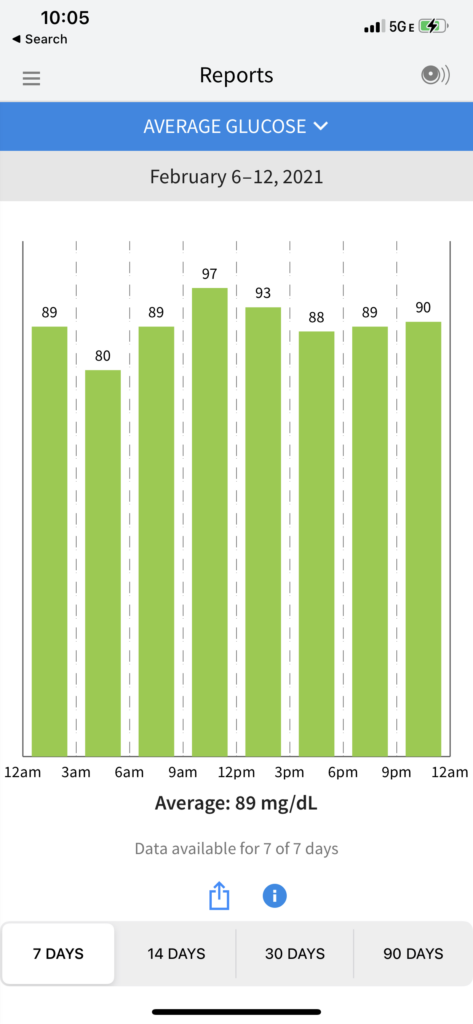
My average glucose actually wound up being notably higher than usual during the fast, drifting from mid-to-high-80s to instead fall into the high-80s to mid-90s. This was likely due to the fact that I was consuming far less blood-glucose-stabilizing fat, protein, and fiber than usual or because catecholamines (hormones secreted by your adrenal glands when you're physically or emotionally stressed) and cortisol increase blood sugar. (Perhaps I was a bit stressed out about not eating meat—heh.)
In addition, my glycemic variability—which is the extent to which one's blood glucose fluctuates during the day—was also much higher than usual. In a nutshell, I experienced far more blood sugar up-and-down roller coaster rides. As I mentioned earlier, this juice fast resulted in a rapid shift of my microbiome, and because one's glycemic response to certain foods is highly individual and mediated by the gut microbiome, this came as no surprise.
This doesn't mean low-calorie, low-carb juicing turns one into a diabetic, but probably indicates that my overall metabolic system was doing some serious glycogen and glucose reshuffling to deal with significant energy deficits in the presence of continued high amounts of physical and cognitive activity, both of which burn far more glucose than I was taking in, in my case.
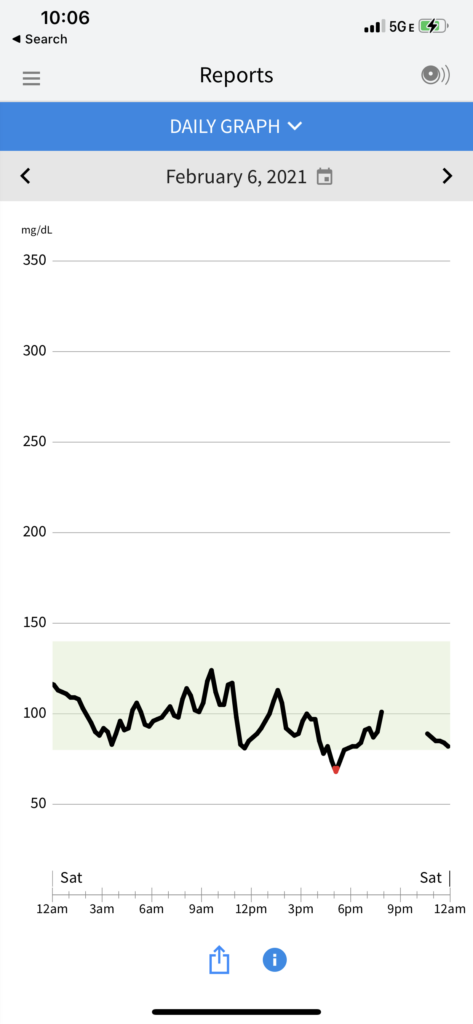
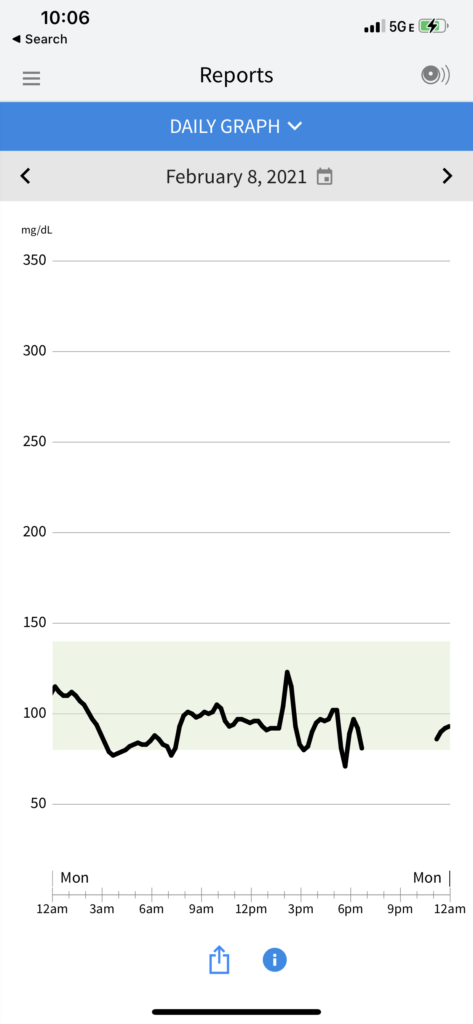
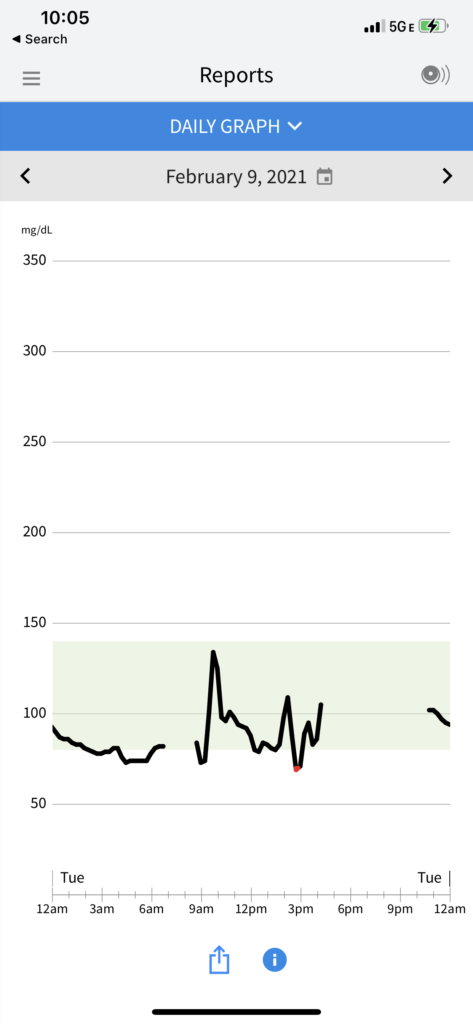
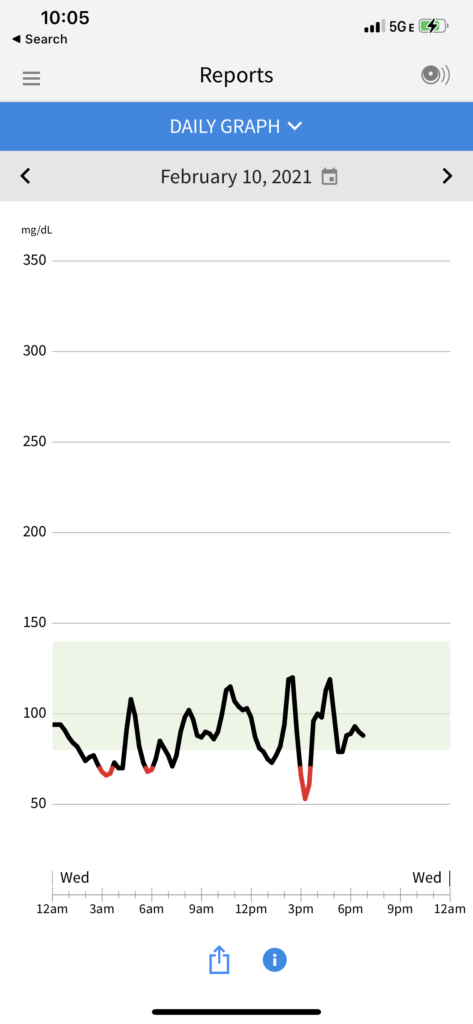
Pre- & Post-Fast Ketones
I'll admit that the results from my Biosense breath ketone monitor actually surprised me. Since I've been following some semblance of a low-carb or keto diet for nearly twenty years, my body tends to shift quite rapidly into ketosis when cutting calories, fasting, consuming exogenous ketones, or restricting carbohydrates.
However, as you can see from a sample day of testing (Feb 7, two days into the protocol shown below) and from my weekly average during those five days of juice fasting, I was really only in a state of “mild-to-moderate” ketosis. On the breath ketone monitor system from Biosense, 0-4 indicates no or low ketones, 5-14 is moderate ketosis, 15-30 is advanced ketosis, 31-39 is deep ketosis, and 40+ is high ketosis.
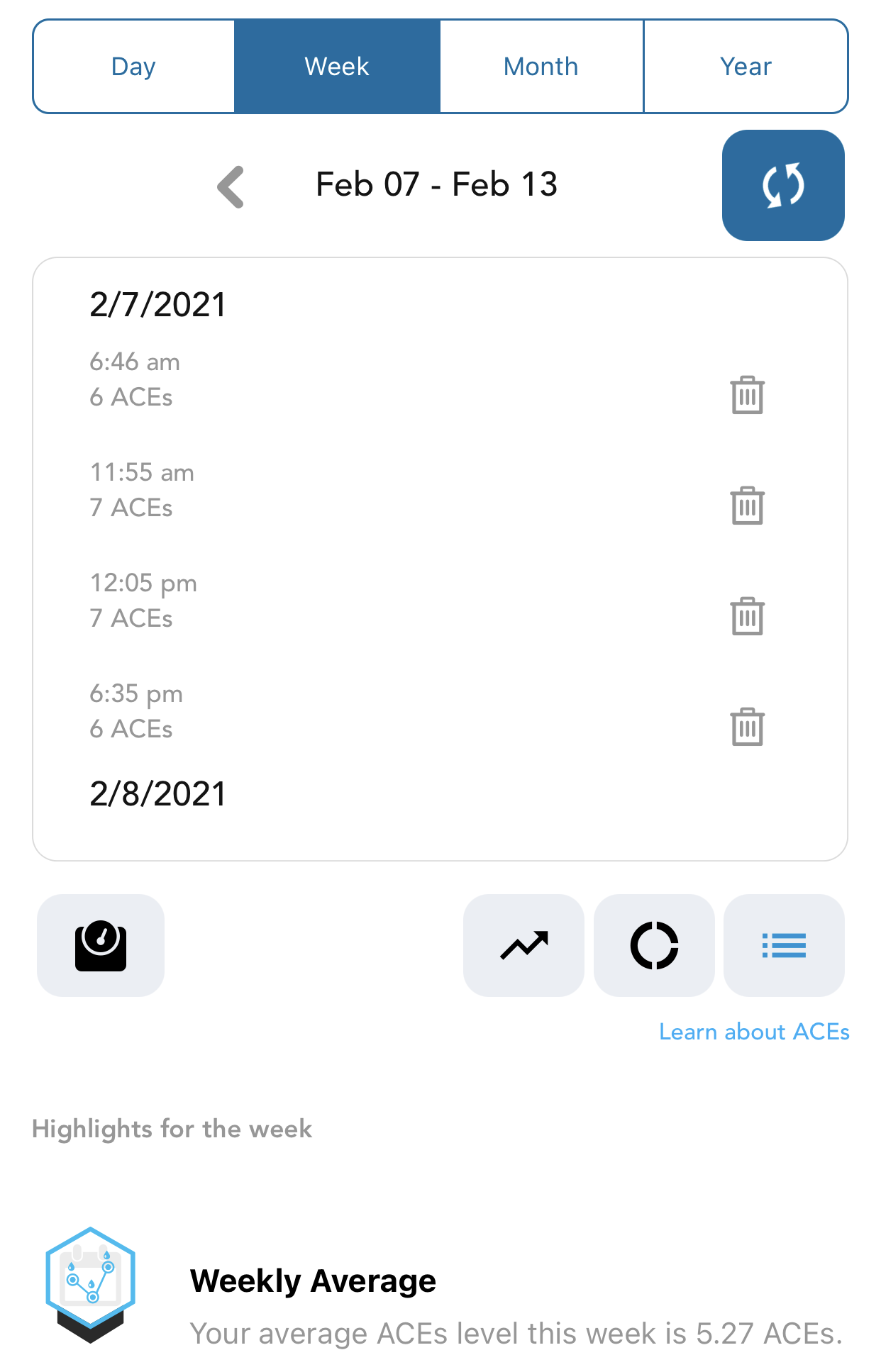
As you can see from the sample day (which is pretty reflective of every day of the juice fast) I was in a state of low-to-moderate ketosis only. I suspect this was due to the rapid glucose fluctuations, mobilization of glucose by the liver, and the low-fat nature of my low-calorie juice fast presenting lower availability for ketone substrates.
Pre- & Post-Fast Oura Ring Data
My Oura ring tracks parameters such as sleep, readiness, activity, body temperature, heart rate, and most other quantitative variables you'd expect a wearable to measure. There were really no notable changes in my data, aside from, as you can see below, an actual increase in HRV and overall readiness score beginning on the first day of the fast, although I made a bit of a rookie error and slipped my ring off for a kettlebell workout on Saturday, then forgot to put it on again until Monday morning, so I did lose just a bit of data.
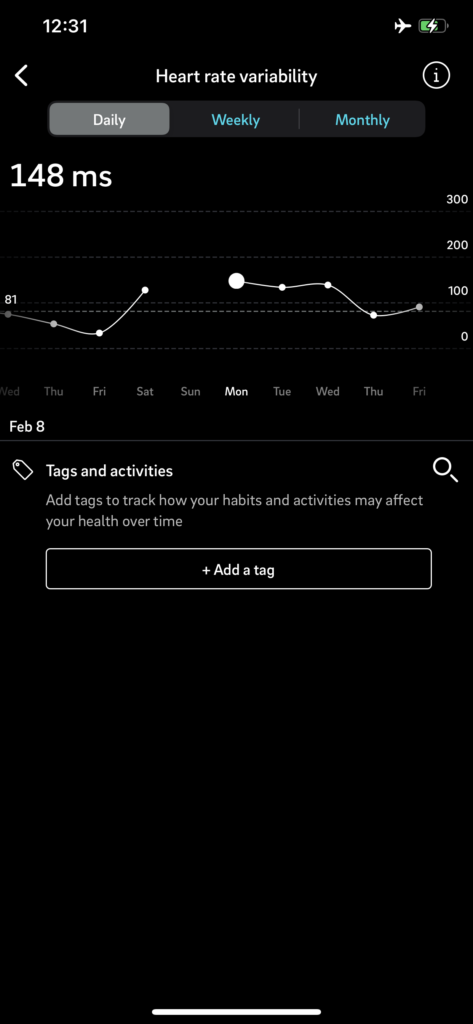
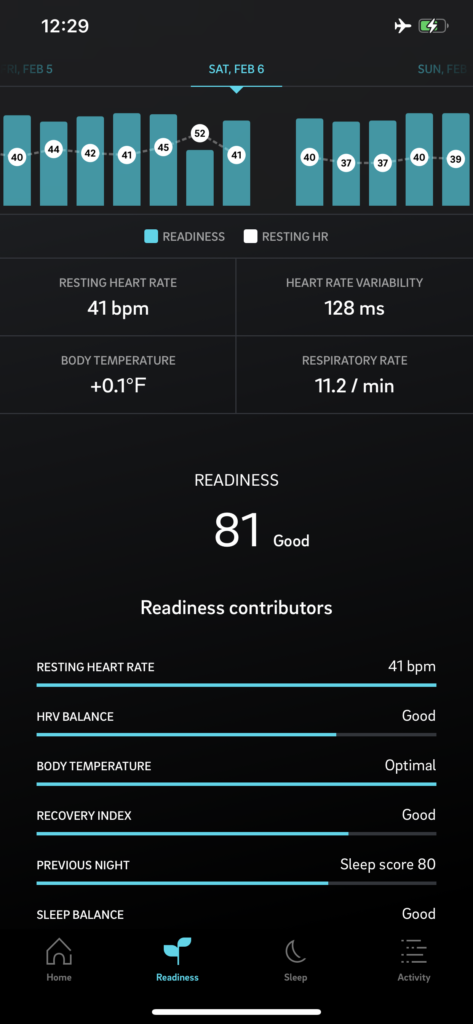
Heart rate and body temperature, particularly during sleep, were also slightly lower, which one would expect when not eating a heavy evening meal.
As I mentioned earlier, since fasting is notorious for disrupting sleep, I used high-dose melatonin for sleep, and that's probably one reason my sleep score—which is typically quite high—didn't seem to skip a beat. You geeks out there can click here to download all my Oura data for the week of the fast, including sleep, body temperature, HR, HRV, readiness score, etc.
Summary
Of course, the million-dollar question I often receive is “how does one break a fast?” or in this case, “how did you break your fast?“
Look, I won't beat around the bush here: Unlike my wife, I was personally craving meat about halfway through day one of this juice fast, and those cravings continued all the way through day five. I was dreaming of bacon and ribeyes, folks. So, naturally, I broke this fast the same way I break most of my fasts…
…I cooked myself up a giant bone-in ribeye steak, served alongside a helping of eggs Benedict, and washed it all down, ironically enough, with one of the Farmers Juice digestive greens blends and a generous handful of digestive enzymes. (The enzymes are indeed a good idea when eating a substantial or heavy meal after a fast.) I find that I do just fine ignoring all that sage advice out there to “ease your way in,” perhaps sipping on a bit of bone broth or nibbling on some solid food or easily digestible protein like a forkful of salmon. Upon diving into my first bite of steak, I felt what I can best describe as a surge of lifeblood filling my veins, and an immediate uptick in energy. The rest of the day, after also having steak and liver for lunch and steak for dinner, I felt high as a kite.
What can I say? I was built to eat meat. I know my body too well.
However, I stand by my words and what I wrote earlier: Occasional breaks from meat, protein, solid food, hefty amounts of fats, and an appreciable amount of overall calories can indeed result in some impressive benefits from a cellular clean-up, detoxification, and longevity standpoint, and this is certainly a fast I would do again as one of my quarterly fasting strategies, although next time I would—from day one—be sure to include the same type of zero or low-calorie solid food additions to ensure my bowels don't empty quite so quickly.
Aside from that, I really wouldn't modify this fast at all, as it worked quite well (unless one is an athlete or exercise enthusiast, in which case you should do as I did and also add in some exogenous ketones, essential amino acids, and electrolytes.)
Finally, the decrease in meal prep time and the increased time available for productive endeavors—as well as the increased quality of meditation, prayer, and devotional time—was quite notable, and this is the reason I also recommend you incorporate a hefty dive into the spiritual disciplines and more deep work during any type of fasting protocol. (Both of these, of course, take your mind off food as well.)
In the meantime, leave your questions, comments, and feedback about juice fasting below, along with your own experiences, tips, and, tricks if you're a juice fasting veteran yourself!







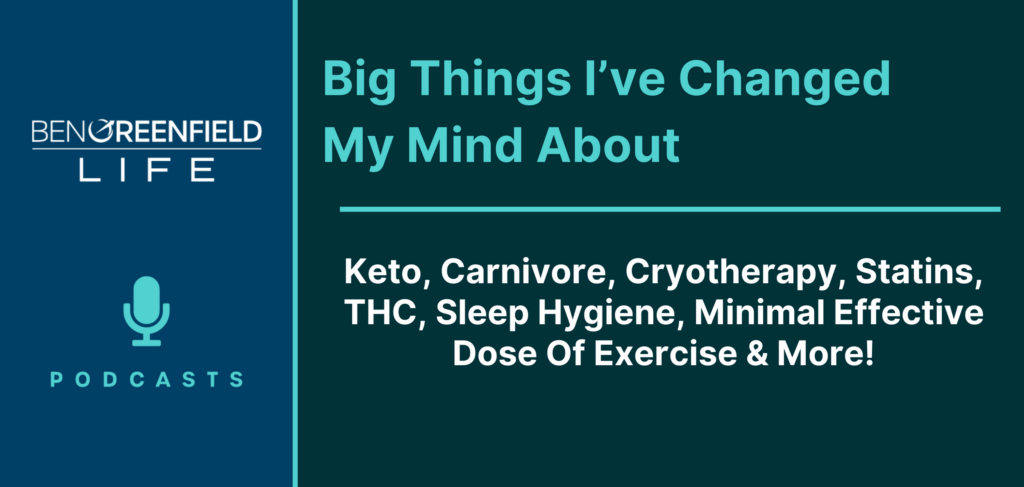










You are ripped!!
:)
can I request formal permission to turn your face into a pin with my button maker (I maker buttons)
Hi Nermal. Please discuss this with my Partnerships Team: partners (at) bengreenfieldlife.com, thank you for asking!
this is great
Thanks
After hearing your podcast about these juices, i eagerly told my boyfriend about them and he ordered them.We have been been making Gerson green juice and carrot juice with added ginger to help him fight his stage 4 cancer, but it is a lot of effort to shop for all the ingredients and make the juices each day. Unfortunately the ones we ordered came looking and tasting oxidized, and are missing many of the healthful ingredients in the Gerson juices. Our juices taste exponentially better. Won’t make this mistake again,
I started weight training at the start but due to work and office, I wasn’t able to continue it so I discontinued it. But just after discontinue I put on like 75-80lbs of weight and everyone used to stare at me, made a joke on me, used to tease me because of my obesity. So finally I decided to do something else other than weight training, I changed my diet using some products to kill my food cravings, and trust me it helped a lot. When I found out that my food cravings are no more, and I have automatically put on a diet because of no food cravings.
https://tinyurl.com/4eek4pat
Hi Ben,
Maybe Jessa, did not do the testing, or did not want to expose them on the net, but if she did, at least a short summary of her results would be helpful for your female readers.
Yes please!!
Fascinating! I am on day 2 of mine and am really enjoying it so far. I’m curious, when did you start administering TRT and do you continue to do so for life?
Hi Ben! Thanks for all this valuable information! I am embarking on this same cleanse now and wearing the Dexcom CGM. Did you see an elevation with the juices with higher fruit content? I am seeing a significant spike and was thinking now I should just drink the greens. I do have some insulin resistance right now despite being lean and eating well, (also doing deliberate cold exposure, sauna, red light therapy, movement) which is recent for me. I wear the sensor continuously, but also have bartonella and mold exposure. Any insight would be great! Thank you
Sounds like an expensive “cleanse”
What was the total cost at the end of the protocol?
Also, 4% body fat?
That number seems to be your baseline average.
Bodybuilders diet down for weeks/months to get down to that level; are you telling us you live continually at that level of body fat?
How are you measuring it?
Hi Ben,
Do you have a discount code for the thorne biomarker tests you did, or know of another company that offers similar tests for a more affordable price? I would really like to take some of those tests to see where my levels are, but they are pricy.
Thanks,
Christina
Care to expand on the nearly 100 ms jump in avg HRV on Day 1 of the cleanse?
Love seeing that you are using idealabs products. I am big fan of both Your and Georgi’s work.
I only scanned the article for now but will read in stain later… I didn’t see anything about how you adjusted exercise s during the fast ? Thanks as always for a ton of awesome info, Ben!
In detail*
Same question as Dan regarding the DHEA. Which did you use? Second, what brand of testosterone cream are you using?
Thanks!
One of your screenshots shows a mobile phone with 5G.
Are you not worried about short range radiation?
Thanks.
Hey Ben,
Small error in your copy (i’m happy I spotted it – means my brain is working well today):
“I’ve actually been experimenting with naval DHEA pregnenolone (pregnenolone is a precursor to progesterone and can elevate progesterone levels) administration before bed at night as a sleep “hack” (a product called Cortinon from idealabsdc.com)”
Cortinon from IDEALABS is progesterone & DHEA. https://raypeatforum.com/community/threads/cortin…
Pansterone from IDEALABS is pregnenolone & DHEA. https://raypeatforum.com/community/threads/panste…
Which did you use and what were the dosages?
Also what other environmental hacks were you using at the time? e.g. Photobiomodulation, IR sauna, Cold therapy etc.
Thanks!
What other environmental hacks were you using at the time? e.g. Photobiomodulation, IR sauna, Cold therapy etc.
Also do you have more info on this too:
“But the question of vitamin D levels is a bit involved. Adequate vitamin A and K, and the minerals potassium and magnesium, protect against toxic effects of excess vitamin D, so if one has higher levels of those compounds they could arguably function well with higher vitamin D levels at lower risk of calcification or other forms of fat-soluble vitamin toxicity.”